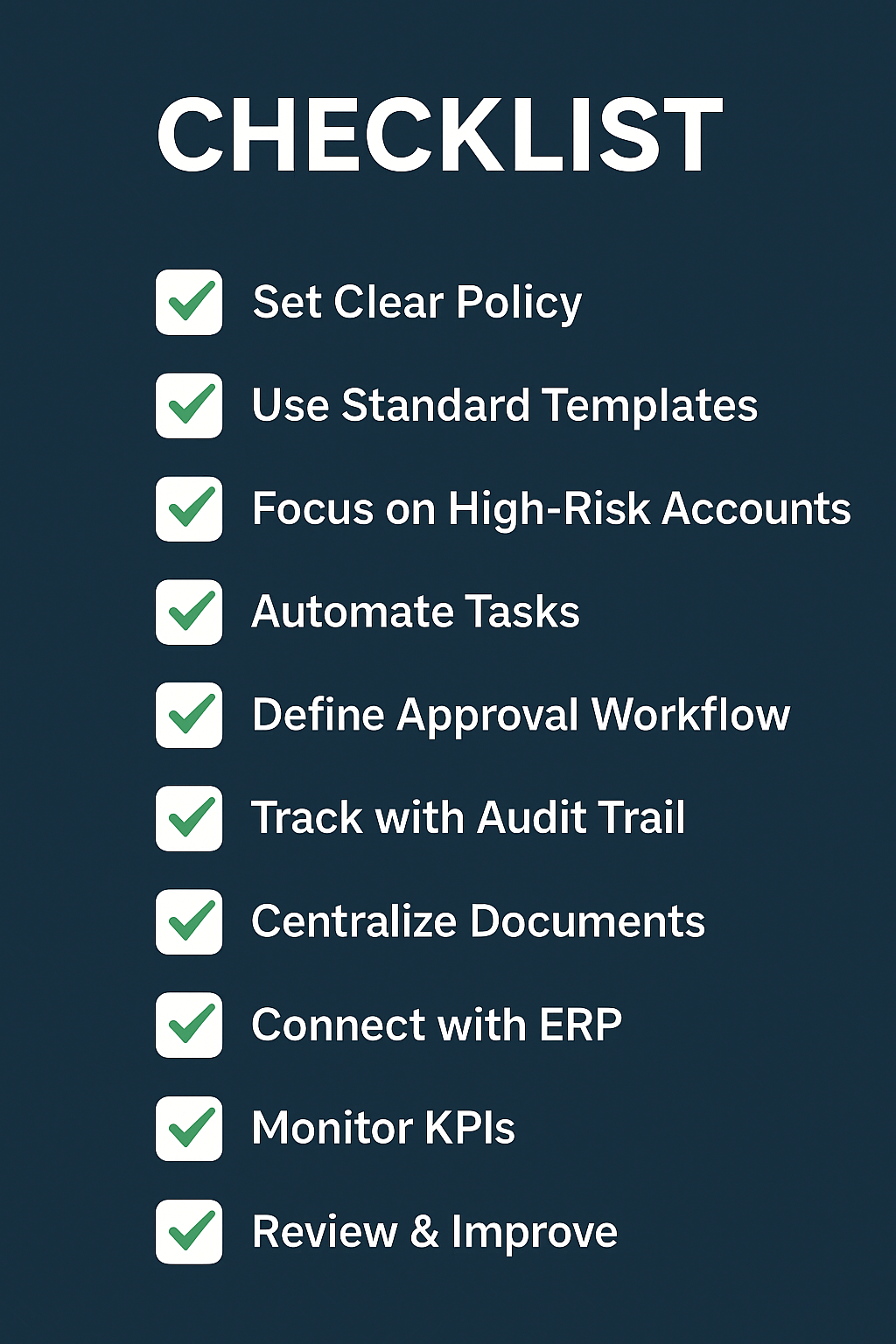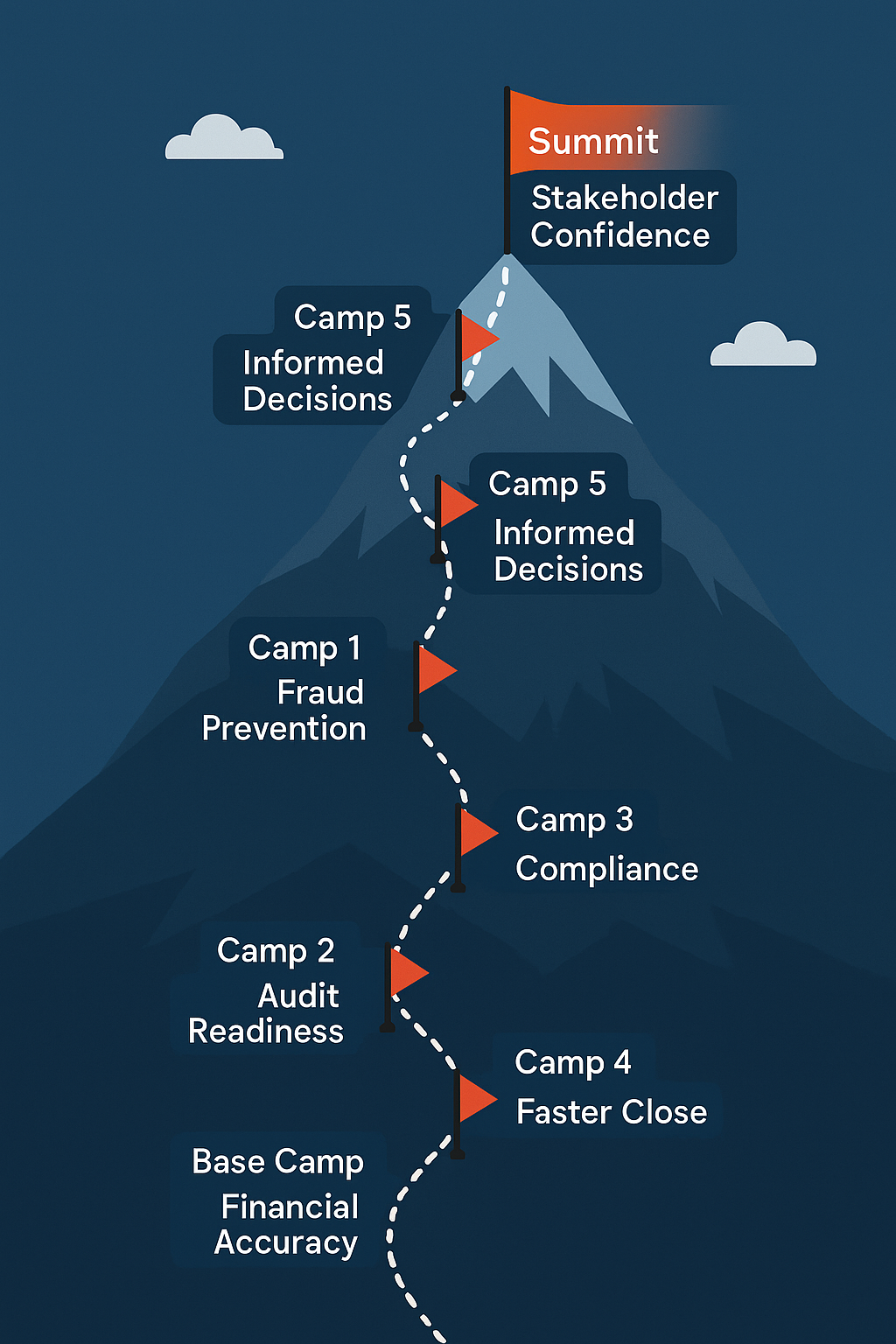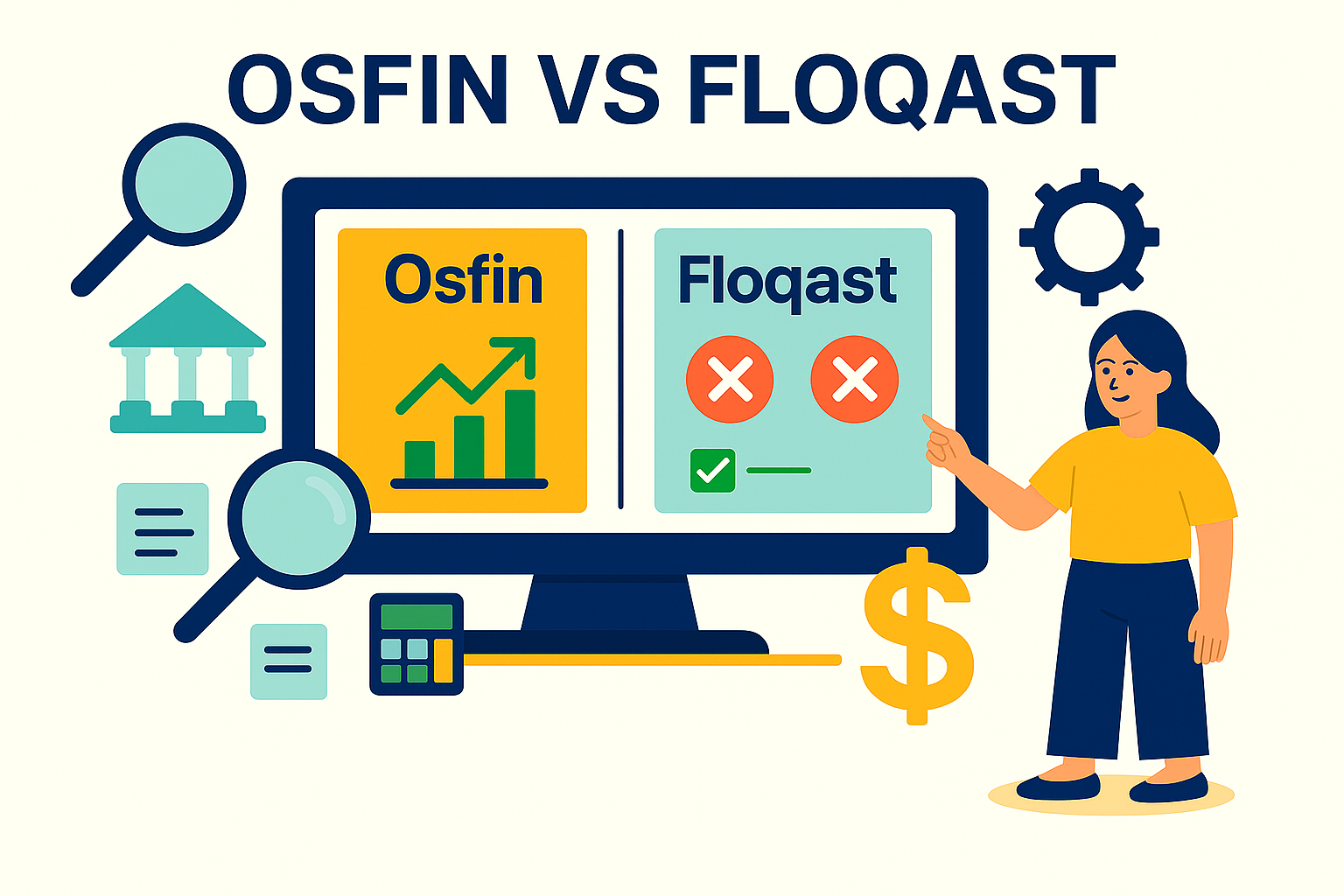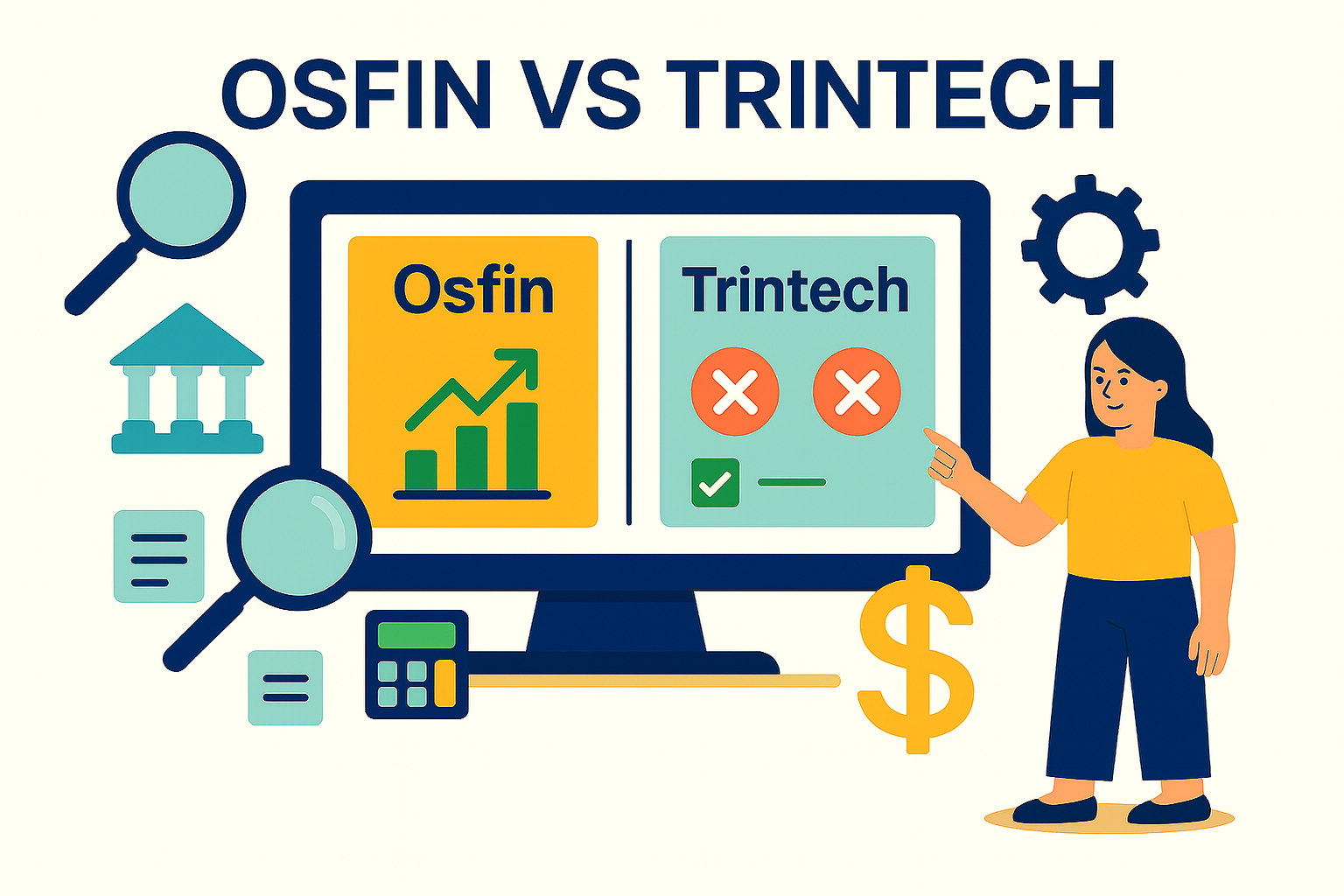10 Account Reconciliation Best Practices for Accurate Reporting
Let's be honest, no one gets excited about reconciliation. It rarely makes headlines or earns applause. But every CFO knows exactly how painful things get when it's done late, done wrong, or worse, not done at all.
Account reconciliation is the financial equivalent of flossing: it's not glamorous, but it's absolutely essential. Easy to put off, even easier to do incorrectly, and yet critical to the health of your financial operations. Skip it, and the risks pile up, errors go unnoticed, discrepancies creep into reports, and audits become a scramble instead of a formality.
The good news? Reconciliation doesn't have to be a dreaded chore. With the right processes in place and the right technology to support them, it can become one of the most efficient and reliable parts of your month-end close. Think of it as going from reactive cleanup to proactive control.
In this guide, we'll walk through what account reconciliation means for your business, why it's more important than ever in today's fast-moving financial environment, and ten reconciliation best practices every CFO should know.
10 Account Reconciliation Best Practices

To ensure your account reconciliation process is not only accurate but also efficient and audit-ready, it's important to apply tried-and-tested reconciliation best practices. Here are ten key strategies that you can implement to take reconciliation to the next level:
1. Establish a Clear Reconciliation Policy
Begin with a well-documented policy that states explicitly which accounts must be reconciled and at what frequency: daily, monthly, quarterly, etc. Ensure it's well-defined who's accountable for each phase, from prepping the data to reviewing and approving. It should also provide practical details, such as the permissible variation threshold, the required supporting documentation, and the timeframe for resolving disagreements. When everyone's on the same page, reconciliation is a whole lot easier and a whole lot less stressful.
Example: Your business can reconcile credit card transactions weekly on a fraud risk basis, whereas petty cash is reconciled every month. Designate ownership of every process and specify clearly the thresholds for duplicate or invalid records, amount variance and settlement dates. For example, any deviation greater than $2 or 0.1% in the settlement amount warrants further examination.
An explicit policy guarantees consistency, establishes expectations, and minimizes confusion among teams.
2. Embrace Agile Configuration
Your reconciliation workflows do not have to be a one-size-fits-all solution. With agile configuration, you can customize workflows, payout validations, and reporting templates to suit your unique operational requirements—whether complex or otherwise.
Example: A rapidly expanding marketplace leverages Osfin to create vendor payout rules tailored to its specific needs, region-specific workflows, and role-based reports for finance leads—all without requiring heavy IT support.
3. Prioritize High-Risk Accounts
All processes and reconciliation types are not equal. See which processes are more at risk – significant balances, lots of transactions or complicated transactions, or error-prone worklows. By using a risk-based method, your team is only working where it will have the most impact, catching issues early and being more effective in its efforts.
Example: A subscription SaaS firm reconciles customer payments (revenue) and payment gateway settlements daily, as even minor discrepancies can result in customer disputes and lost revenue.
4. Automate Repetitive Tasks
Reconciling large-volume accounts, such as bank statements, credit card activity, or payroll, is often tedious and error-prone if done manually. Matching algorithms applied by automation tools facilitate a rapid and accurate comparison of transactions, leaving only exceptions for manual examination. This accelerates the process, minimizes the potential for overlooking discrepancies, and allows your team to focus on more complex reconciliations and analyses.
Example: With Osfin.ai, your team can program rules to automatically reconcile millions of payroll entries in minutes, saving hours each month with fewer manual mistakes.
5. Implement a Clear Approval Workflow
Segregation of duties is crucial for managing risks and maintaining accountability. Create an approval workflow that consists of distinct roles: preparers who compile the data, reviewers who verify accuracy, and approvers who finalize completed reconciliations, members who handle exceptions and approvers again, who confirm the fixes made on exceptions. Automate the workflow using tools that issue reminders, monitor progress, and maintain an open audit trail of approvals and comments. This eliminates bottlenecks and helps identify issues early.
Example: The junior accountant in a mid-sized retail company prepares the bank reconciliation, the finance manager approves his work on the unmatched entries—all traced through an automated system that sends reminders and provides an audit trail.
6. Maintain a Complete Audit Trail
All actions taken in the account reconciliation process, entries, corrections, reviews, and approvals, must be automatically recorded, including user names and dates and times. A full audit trail creates openness and is invaluable during an audit or in-house investigation, offering evidence that controls existed and problems were resolved in a timely manner.
Example: If a subsequent discrepancy in inventory reconciliation is discovered to be caused by a posting mistake, an end-to-end trail assists in recognizing when and how the change was done, and by whom.
7. Centralize Documentation/Omnichannel Data Consolidation
With your business operating across several platforms—think online shops, brick-and-mortar POS systems, and different payment gateways—it can quickly become a mess. By bringing all that data into one location with pre-built connectors, you save time, reduce manual errors, and get a clear financial picture of what's actually going on.
Example: Rather than juggling Shopify exports, Stripe exports, and your in-store POS, your finance team utilizes Osfin.ai to consolidate it all into a single dashboard. No more guesses—just clean, linked data that actually makes sense.
8. Integrate Reconciliation Tools with Your ERP
Reconciliation is most productive when tools communicate directly with your ERP or accounting software. Integration enables real-time data sharing, eliminating the need for manual data transfers and reducing the potential for human error. It also speeds up error detection and resolution, providing your finance team with instant insight into discrepancies as they happen.
Example: An SAP-using manufacturing firm incorporates Osfin.ai to pull ledger entries and bank statements automatically, matching in real-time and with 100% accuracy.
9. Monitor Key Performance Indicators (KPIs)
Track key KPIs to determine the health and effectiveness of your accounting reconciliation process. Critical metrics are:
- Average duration required to reconcile
- Value and quantity of unreconciled or outstanding transactions
- Error rates or inconsistencies identified through review
- Meeting deadlines and policy requirements
Regular monitoring will identify bottlenecks, expose training needs, and indicate where process optimization or automation can be most effectively applied.
Example: A CFO looks at monthly dashboards indicating 95% on-time completion of reconciliations but higher error rates on inventory accounts, leading to a check of the process for that account.
10. Regularly Review and Improve Processes
Account reconciliation best practices and tools should evolve alongside your business. Schedule quarterly or bi-annual reviews of your reconciliation procedures and policies. Encourage your finance team to share feedback on what is working, what is cumbersome, and what could be further automated or standardized. Continuous improvement ensures that your process remains robust, scalable, and aligned with evolving regulatory requirements and changing business needs.
Example: After acquiring a smaller firm, your team may find new accounts or systems that don't align with existing templates. A reconciliation review helps update your framework and ensures consistency across all entities.
Importance of Account Reconciliation

Done right, account reconciliation isn't just about fixing errors—it's about building confidence in your numbers. Here's why this accounting reconciliation process plays such a pivotal role in financial operations:
1. Financial Accuracy
At its essence, reconciliation best practices verify that financial statement balances truly represent the underlying transactions. Through a process of reconciling ledger entries to external statements (e.g., bank statements or supplier invoices), reconciliation detects and resolves errors, omissions, or timing discrepancies. This accuracy is vital to avoid misstated financial information, leading to poor business decisions or regulatory sanctions.
2. Fraud Prevention
Routine reconciliation serves as an early detection system for unauthorized or suspicious transactions. By examining variations between accounts and external records, businesses can identify possible fraudulent activity, whether internal or external, before it escalates. The mere presence of reconciliation best practices also discourages fraud because workers understand deviations will be caught and traced.
3. Audit Readiness
External auditors rely heavily on the accounting reconciliation process to verify the accuracy of financial statements. Properly documented and timely reconciliations demonstrate that your company has excellent internal controls, thereby reducing the likelihood of audit findings and qualified opinions. Not only does this make the audit smooth, but it can also reduce audit fees and improve your organization's reputation for transparency.
4. Regulatory Compliance
In most jurisdictions, legislation such as the Sarbanes-Oxley Act (SOX) requires businesses, particularly publicly listed ones, to maintain accurate and verifiable financial records. The account reconciliation process, at its core, facilitates compliance with these legislations by verifying that reported amounts are substantiated, mitigating chances of legal actions or reputational losses.
5. Faster Financial Close
One of the greatest challenges to finance organizations is achieving a rapid month-end or year-end close. A streamlined accounting reconciliation process ensures that bottlenecks due to open discrepancies or missing data are eliminated. By identifying and resolving issues upfront, organizations can accelerate their close cycles, enabling leadership to gain timely financial insights and respond quickly to market changes.
6. Informed Decision-Making
For finance leaders and CFOs, sound data is the key to a successful strategy. The account reconciliation process ensures that reports accurately reflect the current state, allowing decision-makers to evaluate performance, allocate resources effectively, and make accurate predictions. Without reconciliation, financial information may be outdated or inaccurate, which can result in costly mistakes.
7. Stakeholder Confidence
Whether you're reporting to investors, board members, lenders, or regulatory bodies, trust in your financial information is paramount. A consistent and accurate accounting reconciliation process helps build trust by providing clear evidence that your organization is managing its finances responsibly. This confidence can translate into easier access to capital, better credit terms, and a stronger reputation in the marketplace.
Reconciliation Reinvented with Osfin.ai
If reconciliation continues to involve wrestling with spreadsheets, hunting down documents, and line-by-line double-checking, it's time to make a change. Manual workflows not only slow your team's productivity but also invite errors, delays, and audit frustrations.
Osfin.ai is specifically designed for today's modern finance teams that are ready to reconcile with speed, accuracy, and confidence. It automates the tedious parts of the account reconciliation process, such as data matching, approvals, and variance tracking, so that you can focus on accuracy, insights, and strategic decision-making.
Here's how Osfin.ai stands out:
- Smart Automation: Auto-match transactions with AI-driven rules that process even high-volume data with accuracy.
- Streamlined Integration: With a low-code foundation, Osfin.ai integrates smoothly into your environment with 170+ out-of-the-box integrations, from ERPs and CRMs to banks and ledgers, allowing for quicker ingestion and purer reporting. As a file format agnostic platform, Osfin can ingest data of all types—whether CSVs, Excels, PDFs, or custom exports—allowing for quicker integration and neater, more trustworthy reporting.
- 100% Reconciliation Accuracy: No matter whether you're reconciling cash, payroll, intercompany, or credit card accounts, Osfin.ai ensures you get 100% reconciliation for all accounts, with controls and workflows baked in to keep everything flowing smoothly.
- Real-Time Dashboards & KPIs: Monitor what's been reconciled, what's pending, and where variances still exist—so you're never in the dark.
- Audit-Ready from Day One: Every action, approval, and document is logged and traceable. Compliance and transparency are built in, not bolted on.
The outcome? Faster closes. Fewer errors. Complete visibility.
Rather than patching numbers at the eleventh hour, your team will have a live, unified picture of your reconciliation status by all entities and accounts.
Short version: Osfin.ai enables you to close with confidence every time.
Curious to see it in action? Head to Osfin.ai and learn how finance leaders are transforming reconciliation—one automated close at a time.
FAQs on Account Reconciliation Best Practices
1. Why is account reconciliation necessary?
Account reconciliation helps ensure the general ledger balances with external documents from suppliers like bank statements or invoices. It assists in detecting errors, frauds, or timing differences and is vital for providing accurate financial reporting and being audit-ready.
2. How frequently should the accounts be reconciled?
Frequency is based on account type and risk. High-risk or high-volume accounts such as bank accounts or revenues should be reconciled monthly or even daily. Lower-risk accounts can be reviewed quarterly. Having a specified policy ensures consistency.
3. What accounts need to be reconciled?
Generally, accounts that require reconciliation include bank and cash accounts, accounts receivable and payable, credit card accounts, payroll accounts, intercompany accounts, and fixed assets and inventory. The objective is to make sure that any account affecting your books of record, or carrying possible risk, is reviewed and balanced on a regular basis.
4. How does automation enhance reconciliation?
Automation cuts down manual entry, eliminates human error, and accelerates the entire accounting reconciliation process. Solutions such as Osfin.ai can automatically match transactions, monitor exceptions, and offer real-time dashboards, saving finance teams hours during the close.
5. Is Osfin.ai appropriate for small and mid-sized organizations or only enterprises?
Osfin.ai is built to scale. Its low-code platform, 170+ integrations, and modular workflows enable you to customize solutions to fit your team's size, structure, and reconciliation requirements.


